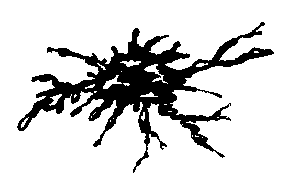|
|

|  |
|
|
|
| ||
|
|
|
|
|
|
|
|
|
Bioleaching of heavy metals in sludge
The existence of sludge disposal in agricultural and forest soils because of sewage treatment plants has been widely practiced, revised, and questioned in countries using this system. Sludge disposal has been used to solve serious problems regarding lack of space for disposal and high cost of transportation of materials as well as to partially replace the use of chemical fertilizers. However, because of the problems of heavy metal load in soil deposited through sludge and the presence of pathogens, restriction to its use in agricultural fields has been enforced in those countries. Although this disposal method has not been widely used in Brazil, the tendency is to increase because there has been noticeable growth in the number of sewage treatment plants, and this has created excessive amounts of sludge. The concern about the heavy metal level is related to cumulative effects. Countries where disposal of sludge is used in agriculture, the relevant laws have become more rigid, which has resulted in lowering the measurable levels. My work evaluated the heavy metals bioleaching efficiency by Thiobacillus bacteria genera in activated sludge; Biological and chemical characterization of the sludge before and after the bioleaching process; and isolation of native microorganisms that was capable of leaching heavy metals. The bioleaching efficiency has affected the 4 elements considered in this study, and they were: Cd(95%); Pb(95%); Cu(95%); Zn(50%). The fertilizer's properties were not affected by this process.
Alexandre Akira Takamatsu M.Sc.
Antonio Salvio Mangrich Ph.D. - UFPR
Keywords: Thiobacillus, heavy-metals, biohydrometallurgy, bioleaching, aerobic sludge, agricultural disposal
Electrochemical monitoring of heavy metal bioleaching by Thiobacillus ferrooxidans in municipal sewage sludge (II) TAKAMATSU1, A. A., and MANGRICH2 A. S. 1 Instituto de Tecnologia do Paraná, CEP 81350-010, CP 357, Curitiba, PR, Brazil Departamento de Química, UFPR, CEP 81531-970, Curitiba, PR, Brazil
The subject of sludge disposal in agricultural and forest soils has been widely revised and the practice has been questioned in several countries. Although partially solving problems, the procedure creates serious difficulties with heavy metal loading in soils. This work employed an electrochemical method to monitor bacterial activity in the sludge suspension, focusing on a coupled Fe2+ / Fe3+ redox process. The chemical and biochemical reactions are as follows (MS is a divalent heavy metal sulfide): Thiobacillus ferrooxidans 2 Fe2+ + ½ O2 + 2H+ ----------> 2Fe3+ + H2O MS + 2Fe3+ ----------> M2+ + 2Fe2+ + S0 Thiobacilli S0 + 3/2 O2 + H2O -------> 2H+ + SO4 2-
The method was adapted from bioinorganic hidrometalurgy process (Pesic, B. et al. Biotech. Bioeng., 33, 428, 1989) and employed two eletrochemical half-cell with a Pt-working electrode and a Ag/AgCl reference electrode. Bacteria containing sludge from sewage treatment plant in Curitiba (Brazil) was previously contaminated with CuS (Cu, 175 ppm), ZnS (Zn, 775 ppm), CdS (Cd, 9 ppm), and PbS (Pb, 145 ppm). Metal concentrations were determinated by Inductively Coupled Plasma - Atomic Emission Spectroscopy (ICP-AES). The bioleaching process was followed by electrical potential readings which reached a constant value at completion after about seven days. Bioleaching efficiency was high (95%) for Cu, Cd and Pb contaminations. Changes in element concentrations relevant to plant nutrition due to bacterial growth were as indicated: Total N: 10.45% è 6,00%; total P: 1.68% è 2.43%; soluble K: 2.77% è 3.60%; total Ca: 0.14% è 0.17%; total C: 14.54% è 17.43%. (PADCT/FINEP, CNPq, CAPES).
*Part I was presented as partial results during the V ENAMA
(Fortaleza, CE, Brazil)
|
|

|  |
|
|
|
| ||
|
|
|
|
|
|
|
|
|
The Environmental Microbiology Web Page is © Copyright 1998 by Alexandre Akira Takamatsu.None of my material can be used on any other site without prior permission from the author. However, feel free to link to my site from yours.